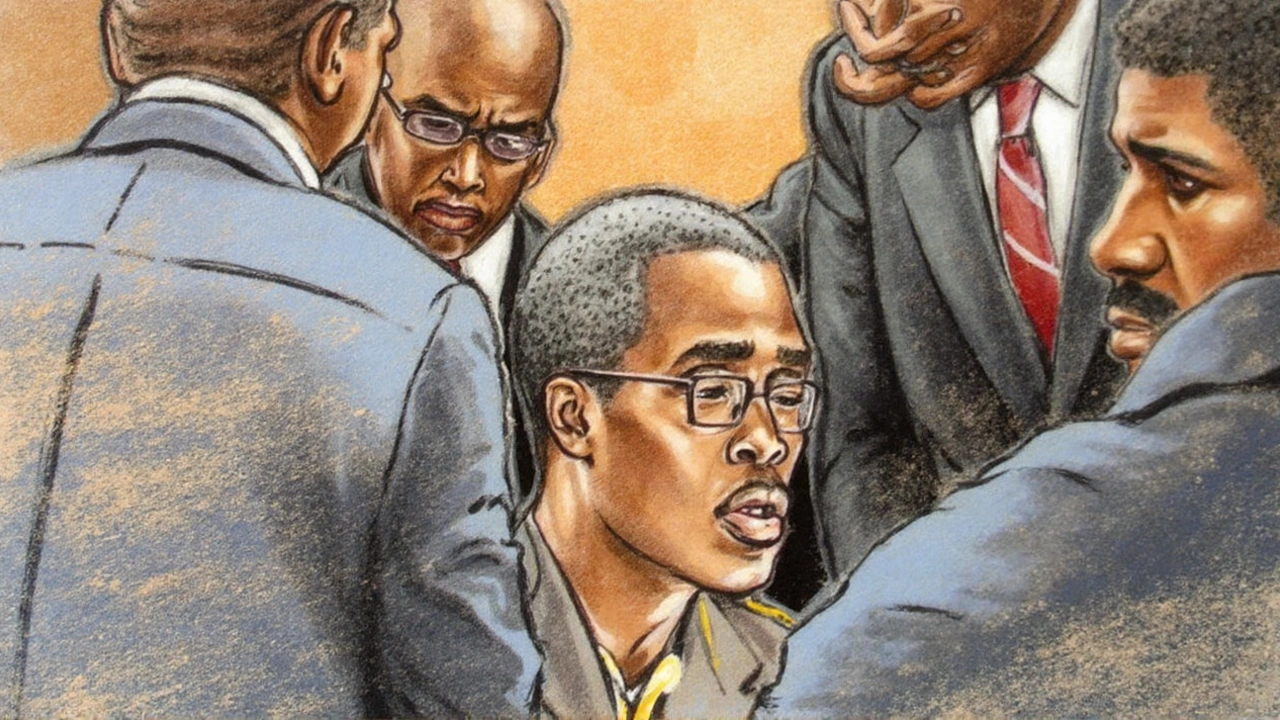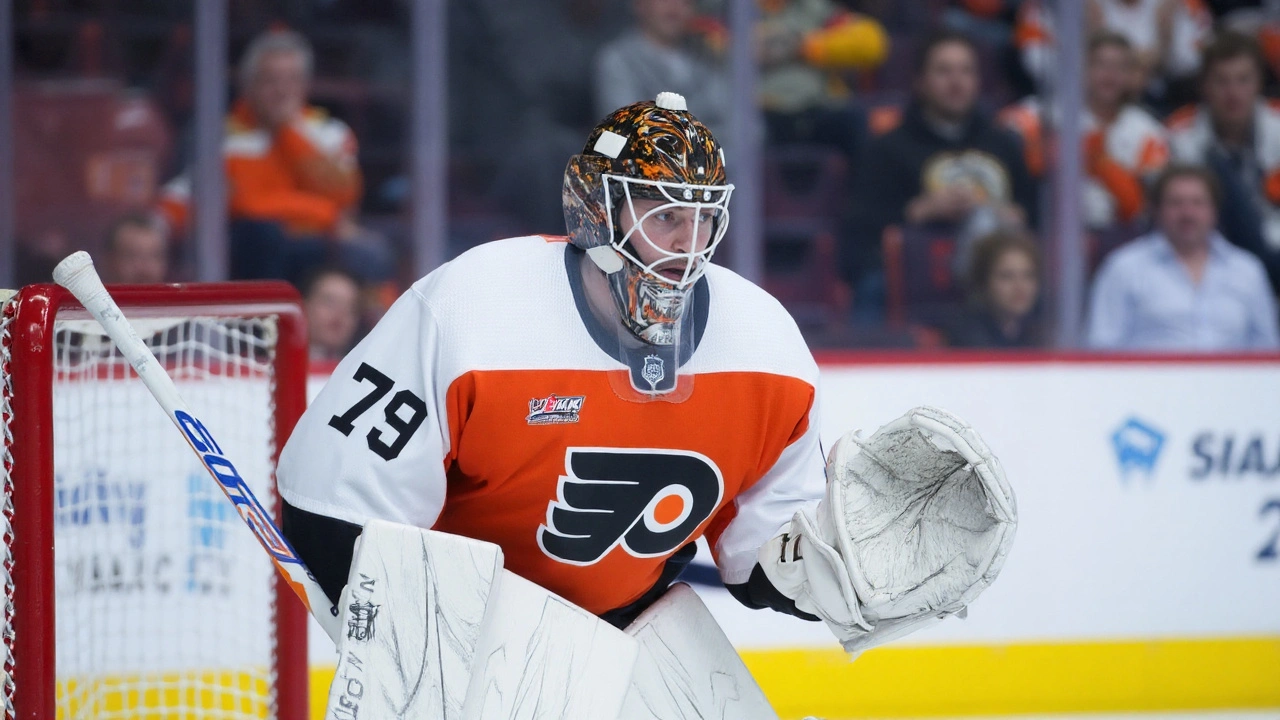Why Carter Hart may be first to get a call
In a league where one save can swing a season, the market is ruthless about supply and demand. That’s why, if the NHL formalizes a path back for players who’ve been suspended during a high-profile investigation, goaltender Carter Hart is the name most likely to move first. Teams need stability in net, the goalie carousel turns every summer, and the options are thinner than they look once you factor in health, age, and cap space.
Reports this week suggest the league and the players’ union are preparing eligibility reviews connected to the group that includes Hart, Michael McLeod, Dillon Dube, Cal Foote, and Alex Formenton. Their NHL status has been on hold pending legal and league-level processes. If and when suspensions are lifted and they are deemed eligible, the conversation shifts from policy to hockey — who can help right now, at what price, and with what precautions.
Goalies always get a longer look because there are so few who can carry 45–55 starts and keep a team in the playoff race. Hart is mid-20s, has multiple seasons as an NHL starter, and has posted stretches of above-league-average play behind rebuilding rosters. For teams that rode a tandem too hard last year or lack a clear 1B, a short-term deal with hard club options would be a logical template. It’s the classic low-cost, controllable swing.
There’s also precedent for “prove-it” contracts reshaping careers. Ilya Samsonov went from a non-tender to a one-year bet and earned a bigger role, at least initially. Jack Campbell’s bounce-and-bust cycle reminded GMs to keep guarantees tight. For a goalie like Hart, the likely path is one year, modest cap hit, deep behavioral and character vetting, and strict performance checkpoints.
Teams will not treat this like a normal signing. Expect ownership sign-off, third-party due diligence, and community engagement plans drawn up before pen hits paper. Clubs will weigh three buckets: on-ice value, organizational standards, and fan trust. Some markets will simply pass. Others — especially those rebuilding or with entrenched leadership groups — will explore a controlled re-entry, possibly starting with a training camp invite before a contract.

The rest of the group — roles, risks, and realistic fits
Assuming eligibility is restored, the skaters face a tougher market than a starting-caliber goalie. Their roles are narrower, and teams can usually find comparable depth without the extra attention. Here’s how each profile stacks up on the ice.
- Michael McLeod (C): Right-shot center with speed, penalty-kill value, and strong faceoff results that have hovered in the mid-to-high 50s at times. Projects as a fourth-line center who can take defensive-zone draws and push pace. Likely route: camp invite or a one-year, low cap hit as a specialist.
- Dillon Dube (LW/RW): Versatile winger who skates, forechecks, and can play both special teams. Has flashed middle-six scoring punch, including a high-teens goal season earlier in his career. Likely route: a short deal with clear usage — energy line, secondary scoring, PK minutes.
- Cal Foote (RD): Big-bodied, right-shot defenseman, depth minutes, penalty kill, and net-front work. Projects as a third-pair option who can spot in higher when injuries hit. Likely route: two-way or low-guarantee NHL deal with a fight for the No. 6/7 spot.
- Alex Formenton (LW): Straight-line speed, dangerous on the rush and the PK. Recorded a career-high goal total in Ottawa before playing in Europe. Likely route: wing depth on a value deal, competition-heavy camp, and limited special-teams looks at first.
The on-ice case is the easy part. The harder piece is reputational risk management. Any team weighing these players will map out: leadership support in the room, media and fan engagement strategies, community safety commitments, and clear internal standards. Many GMs will prefer a staged approach — invite to camp, fitness and conditioning milestones, then a contract only if all benchmarks are met.
Contract structure will be conservative. Expect short terms, minimal guarantees, and options that allow a quick pivot if the fit isn’t right. Professional tryouts (PTOs) are a practical tool, especially if eligibility is confirmed close to training camp. If signings happen midseason, you could see AHL assignments (subject to waiver rules) to rebuild game reps and evaluate form under lower pressure.
Why does Hart’s path look smoother than the skaters’? Because contenders are always one injury away from a crease problem, and rebuilders crave stability to protect young cores. A competent 1B who can push a starter to 55/27 starts is worth real wins, and wins are currency. A bottom-six forward or third-pair defenseman is easier to replace without the headlines.
Timing matters. Summer invites are the cleanest way to reboot: fresh slate, full camp, no travel chaos. If eligibility is restored late, a December or January signing can still work, but clubs will want at least a few weeks of practice and, ideally, tune-up games in the AHL if rules allow. Either way, the first move will tell you how the rest of the league plans to handle the group.
So who moves first if green lights arrive? The betting line points to the crease. Teams with cap space, goalie instability, and a strong leadership core will kick the tires. If a fit is there, a one-year, low-risk deal is the simplest bridge back to the NHL — and the standard other clubs will copy for the rest of the group.


Comments
Eric Yee
Carter Hart’s resume reads like a steady ship in a storm‑tossed league. He’s hit the 20‑win mark more often than not and can handle a heavy workload without wobbling. Teams that have been flirting with goalie turnover will love the low‑risk vibes he brings. A one‑year prove‑it deal with modest cap hits feels like a textbook move. The market’s appetite for a reliable netminder is definitely still alive
September 16, 2025 at 16:13
Sohila Sandher
the skaters might still def need a chance te get back onto the ice
September 16, 2025 at 17:03
Anthony Morgano
Totally feel you on the Hart angle 🙂 his consistency could be the glue for a rebuild crew that’s looking for a calm presence in the crease. A short term contract would let him prove himself again without a huge cap hit and give the club flexibility. Plus his playoff experience adds a little extra seasoning that younger goalies lack. It’s a win‑win for both sides if the league clears the eligibility quickly. Fans will love seeing his gloves back in action
September 16, 2025 at 17:53
Holly B.
While the forward group faces a steeper climb the underlying skill set remains evident. Teams can evaluate them through summer invites or PTOs to gauge readiness. A disciplined approach to character assessment aligns with organizational standards. Short‑term, low‑guarantee contracts keep financial exposure minimal. This method respects both the league’s process and the players’ desire to return
September 16, 2025 at 19:00
Lauren Markovic
Alright let’s break this down piece by piece 🚀. First off, Hart’s market value is surprisingly elastic when you factor in the current goalie scarcity across the league. Second, his age puts him in that sweet spot where experience meets still‑high upside, which is gold for any team sitting on a cap‑space bench. Third, the “prove‑it” contract model isn’t just a buzzword; it’s a practical tool that lets clubs test performance while keeping payroll flexible. Fourth, we’ve seen the Samsonov and Campbell cases work out, and those stories should give general managers a roadmap. Fifth, the mental side of the game can’t be ignored – Hart’s reputation for composure under pressure is a tangible asset. Sixth, a one‑year deal with club options gives both the player and the organization room to renegotiate if the season goes well. Seventh, the fan base will respond positively to a familiar name returning after a suspension if the team handles the PR side correctly. Eighth, community outreach programs can be paired with the contract to rebuild trust and showcase commitment. Ninth, from a scouting perspective, a veteran goalie can mentor younger netminders in the system, accelerating their development. Tenth, the timing of a summer invite can smooth the transition, allowing Hart to get back into game shape without the rush of a mid‑season signing. Eleventh, if the eligibility clearance drags into the fall, a short‑term PTO could still be an effective bridge. Twelfth, the cap hit for a low‑risk, one‑year contract is likely to sit comfortably under most teams’ ceiling. Thirteenth, a performance‑based bonus structure could further align incentives. Fourteenth, the league’s rigorous character vetting will likely include regular check‑ins and community service milestones. Finally, if Hart nails the season, the ripple effect could open doors for the rest of the suspended group as clubs see a successful template in action 😊
September 16, 2025 at 20:06
Kathryn Susan Jenifer
Oh great another “low‑risk” gamble – as if the league’s clean‑up crew can magically erase past messes and we’ll all just cheer on a fresh start.
September 16, 2025 at 21:13